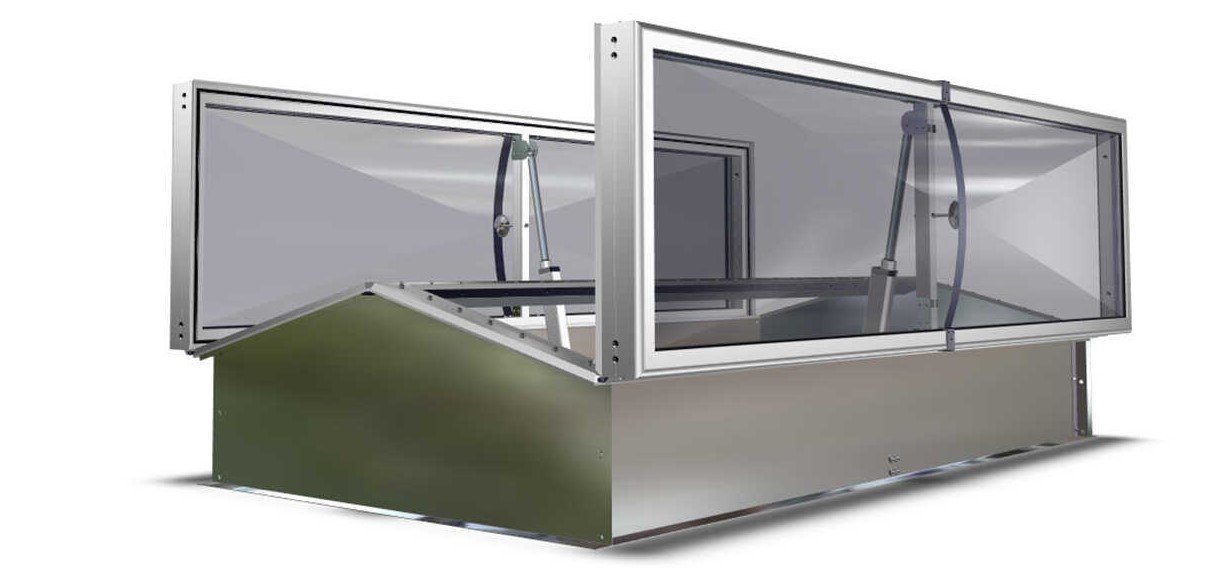How to Select and When to Use Smoke Dampers

Smoke dampers are multifunctional devices that can improve safety in case of fire. But this is not their only role. Manufacturers offer smoke dampers in various shapes and sizes. Among them there are square, rectangular, and round dampers. Lately, louvre-like devices have also become more and more popular. The latter option has two main advantages: it is easy to open and offers low resistance against the air stream.
Simple Mechanism, Relevant Advantages
Simplicity arising from the laws of physics gives smoke dampers a great advantage. The design and operation of dampers is based on the convection mechanism, i.e. moving up the warmer gases. When dampers are properly laid out and installed, they ensure efficient extraction of smoke. This, in turn, translates into a decreased temperature and increased visibility in lower parts of a building on fire, and enables emergency services to evacuate people quicker and make a rescue action more effective. It is also worth noting that a rapid increase in temperature (quite often up to hundreds of degrees during fire) poses a threat not only to occupants, but also to the integrity of a building structure.

Where Can Smoke Dampers Be Used?
This option is suitable both for installation in multi-storey buildings and in one-floor houses. Smoke dampers are commonly used in warehouses, production buildings and public buildings. Some dampers have openable covers filled with translucent material, so they also perform the role of single pane skylights. The third function of smoke dampers, when appropriate tooling is used, is the cyclic ventilation of buildings.
Technical Conditions for Smoke Dampers
Smoke dampers may be used with various types of roof covers. When properly installed, they perform well on roofs covered with roofing paper as well as with steel sheet and PVC membrane. When selecting and ordering a damper, it is crucial to provide mounting hole parameters. The other parameter that should be taken into account is the base height, which should be tailored to the total thickness of all layers of the roofing.
Dampers should also be fitted with actuators and connected to the installation in such a way that they form a joint smoke extraction system of a given room or building.
Smoke dampers are suitable for mounting onto flat roofs slanted by not more than 15°. The distances between individual dampers may not be smaller than the sum of the longer sides or diameters of both dampers, and may not be greater than 20 m. They can be installed directly on a roof structure as well as on wooden or metal plinths. It is very important to evenly lay out the holes in a roof. The only acceptable exceptions to this rule are situations where there are materials of different vulnerability to fire and high temperature within the roof. In this case the holes shall be laid out in such a way as to optimally use the properties of the given part of roofing.
How to Mount Smoke Dampers?
As for the distances between individual dampers, a possibility of wider spreading of fire once the dampers are open should be taken into account. The distance between a roof edge and any damper should not be greater than 10 meters (if the roof slope is less than 12 degrees), and 20 meters if the slope is greater. This is an extremely important rule which – in view of safety – shall undoubtedly be observed.
The correct installation of smoke dampers offers the possibility of lowering the building fire protection class, enlarging permissible fire zones and lengthening escape routes. Dampers make it easier to evacuate people out of a building and enable emergency services to take appropriate action by keeping the lower areas of the facility, including escape routes, free of smoke. Smoke dampers reduce the thermal load of a building structure by extracting heat created during fire, which makes it possible to reduce material loss caused by fire.
Smoke Dampers – Important Recommendations
It is recommended to use 50 mm thick mineral wool insulation when installing smoke dampers. The insulation material should be of A1 reaction-to-fire class and have high density (at least 150 kg/m³) and thermal insulation power (at least thermal resistance Ri = 1.25 M²∙K/W).
Heat-transfer coefficient for the base insulated by means of 50 mm thick mineral wool is U = 0.80 [W/m²K]. Moisture tightness is obtained by means of using bituminous insulation materials appropriate for the given roof structure.
Adequate selection and proper installation of smoke dampers may give invaluable benefits in case of a fire hazard. It is surely worth applying this option and taking advantage of a full spectrum of its features, both in new and existing buildings.



